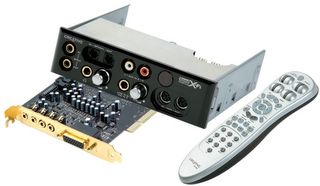
S/PDIF Interface

I added a few additional comments on the S/PDIF interface page. The S/PDIF may be seen on the 5/14 audio bay shown above. The interface for S/PDIF is shown as two RCA jacks on the far left of the bay. The pic is the Sound Blaster X-Fi Platinum Sound Card used in my computer system [interfacebus: Desk Top PC].
S/PDIF Description
S/PDIF [Sony/Philips Digital Interface] is used on digital audio consumer products while the AES3 interface is used with professional products. The S/PDIF may also be listed as SPDIF. Version 2.2 of Audio Codec '97 [AC 97], released in 2000 talks about the S/PDIF interface as it relates to computer support. AC 97, which is written by intel, recommends against using S/PDIF in favor of either USB or Firewire. The AC 97 document indicates that S/PDIF is not as user-friendly as USB or IEEE 1394. S/PDIF is non-PnP, uni-directional, low bandwidth, and carries data only ( .. no indication the S/PDIF is installed or operational..). However as of the 2002 revision of AC 97 those comments have been removed.
S/PDIF uses 75 ohm coax cable with BNC Connectors. However RCA jacks are common on computer equipment. The maximum cable length is 10 meters. The output voltage level for SPDIF is 0.6 volts maximum, with input voltage levels of 0.2 volts. SPDIF signals may also be provided as TTL voltage levels. Fiber connectors are also common using TOSLINK fiber connectors. Because the IEC standard defines the characteristics of S/PDIF, the IEC specifications should be used instead of the SPDIF standard
FYI: a new standard was released by intel in 2004; High Definition Audio Specification [HD Audio]. HD Audio is not backward compatible with AC 97.
SPDIF Standard Organizations
IEC 60958-3: Digital audio interface - Part 3: Consumer applications
IEC 60958 and EIAJ CO-1201 cover both consumer and professional definitions

No comments:
Post a Comment